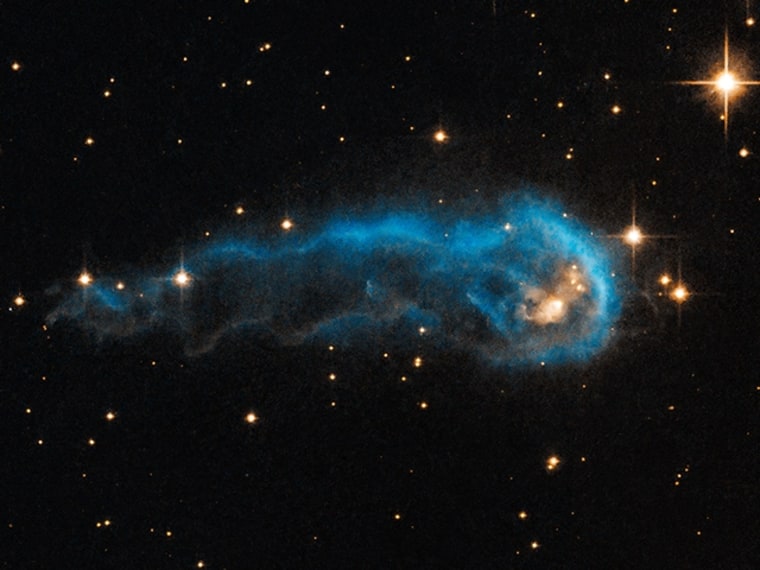
The light-year-long squiggle of gas and dust known as IRAS 20324+4057 has been compared to a caterpillar — and like a caterpillar, it's in the midst of a metamorphosis. What kind of stellar creature will emerge?
This picture of IRAS 20324+4057, released on Thursday by the Space Telescope Science Institute, is based on data in green and infrared wavelengths gathered by the Advanced Camera for Surveys in 2006, plus ground-based hydrogen data collected by the Isaac Newton Telescope in 2003 as part of the IPHAS H-alpha survey.
A previous study has called the object, which lies 4,500 light-years away in the constellation Cygnus, a "tadpole in an interstellar pond." Caterpillar or tadpole, either description is apt. There's a bright protostar shining inside the cosmic critter's head, and a wriggling tail of gas trailing behind.
The caterpillar is shaped that way because the gas is being eroded by a blast of stellar radiation from 15 light-years away. The culprits are hundreds of hot stars toward the right edge of the image, known collectively as the Cygnus OB2 association.
Spectroscopic observations of the protostar suggest that it's still bringing material from the outer envelope of gas and dust, thanks to its gravitational attraction. At the same time, gas is being stripped away by Cygnus OB2's starlight. "Only time will tell if the formed star will be a 'heavyweight' or a 'lightweight' with respect to its mass," the Hubble team says in Thursday's image advisory.
More space oddities from Hubble:
Alan Boyle is NBCNews.com's science editor. Connect with the Cosmic Log community by "liking" the NBC News Science Facebook page, following @b0yle on Twitter and adding the Cosmic Log page to your Google+ presence. To keep up with NBCNews.com's stories about science and space, sign up for the Tech & Science newsletter, delivered to your email in-box every weekday. You can also check out "The Case for Pluto," my book about the controversial dwarf planet and the search for new worlds.
